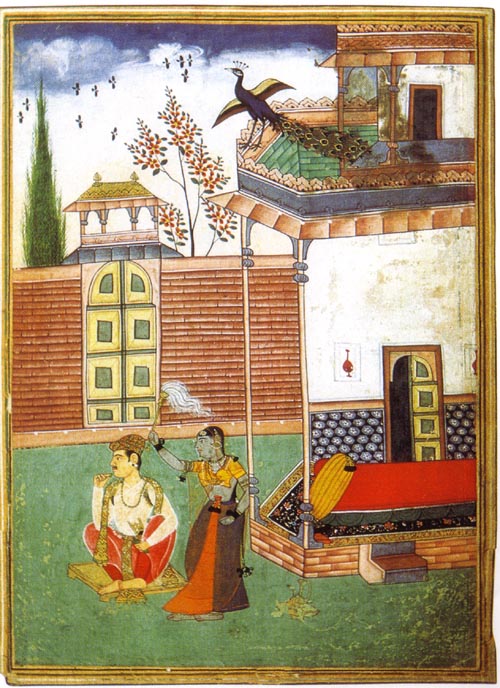Meet the deities. Here is Vishnu as a blue-skinned boar, saving the world from a snarling hairy demon. Here is Shiva, drunk out of his mind, singing lustily to a young girl by the side of a river. Here is Krishna, in earnest conversation with his lover Radha, on the top floor of an elegant mansion in the lush Indian countryside, as the monsoon storms rage.
All have starring roles in “Faith, Narrative and Desire: Masterpieces of Indian Painting in the British Museum”, an exhibition intended to celebrate the sixtieth anniversary of Indian Independence. Sixty paintings have been painstakingly selected by curator Richard Blurton. They range from the seventeenth century to the early twentieth, and have been chosen to represent many of the schools and genres of art created on the Indian subcontinent during that span of three hundred years. Styles and subjects might change but the bright polymorphous gods of the Hindu tradition are omnipresent. They inhabit a world of vertiginously flattened perspectives, where the background might be formed by a single block of colour, or by a band of vivid but summarily indicated clouds. Spatial realism counts for little in much Indian art. Feeling and imagination are all.
The British Museum has a collection of around 6,000 Indian paintings, which remains something of a well kept secret. There is no permanent gallery for the collection within the museum itself. Many of the works are in the notoriously light-sensitive medium of watercolour, which means that they can only infrequently be shown. They are inherently difficult to display in a way that is true to their nature, because they were never intended to be seen in anything like modern museum conditions. They are mostly small and intimate objects, images designed to be passed from hand to hand in...


